Communities of Oro-Medonte
Carley
Carley was named, like many other hamlets, after a local family. The Canadian Pacific Railway built a line from Toronto to Sudbury in 1907 and Carley was created. A train station, water tank and residence were built by CPR on what is now the Warminster Side Road as a refuel depot and also to serve local farm families. A stockyard was added in 1909 to accommodate the shipment of hogs and cattle.
Expansion began with the addition of a post office and an outdoor ice rink was built for winter hockey. In 1911 telephone lines appeared and the McDuff Bros. of Coulson were contracted to build a one room schoolhouse. The McDuff Bros. built the school house using their state of the art cement machine. Miss Maud Bell, a resident of Carley, was the first teacher. The doors opened in 1913 to her 20 students’ grades 1 to 8. By 1920 a general store, boarding house and brickworks were added to the community.
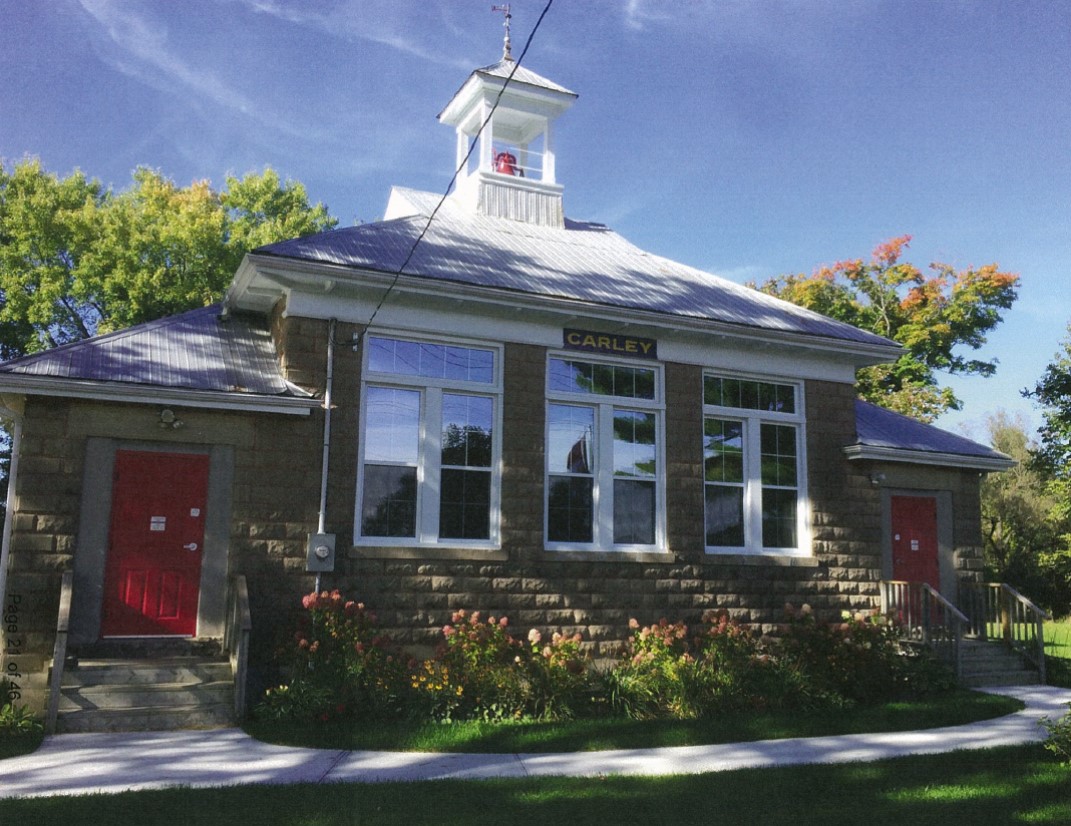
Carley Community Hall
And so the one room school house began its history as the focal point of the community. As there was no church, the residents used the school house for religious meetings. Community picnics were also held on the school grounds at which they had races, games, a luncheon and on occasion ice cream. The school had a sports field which the resident youngsters used to play basketball and football.
1939 was an historic year for Carley as the train carrying King George VI and Queen Elizabeth (the queen mother) stopped to take on water. The area residents organized a “light” show for the royal couple by lighting bonfires and turning on their car headlights. As with many rural communities, Carley diminished as members of farm families were being drawn to the city. In 1960 the rail station was closed and torn down. Better roads, more cars and ultimately diesel engines led to its decreased size.
The one room schoolhouse graduated its last 15 students (taught by Mr. Robert Ritchie) in 1965. Due to provincial policy of school consolidation, one room school houses were now a thing of the past. The one room school house is the community’s only remaining historical building. Currently, it is being used as the community hall and residents hold craft sales, family reunions and euchre tournaments there.
Coulson
Coulson is a small hamlet in Oro-Medonte that has at its center Line 7 and Horseshoe Valley Road. Coulson was named after an early settler, James Coulson, who came to the area in 1864. He built a water-powered grist mill on the site of an earlier mill. The village had a post office and general store. The church in Coulson was built initially to serve any Protestant denomination that wanted to use it. In 1965 it was closed by the United Church of Canada and it’s now kept in good repair by people of the community. Folk concerts are regularly held in this venue.
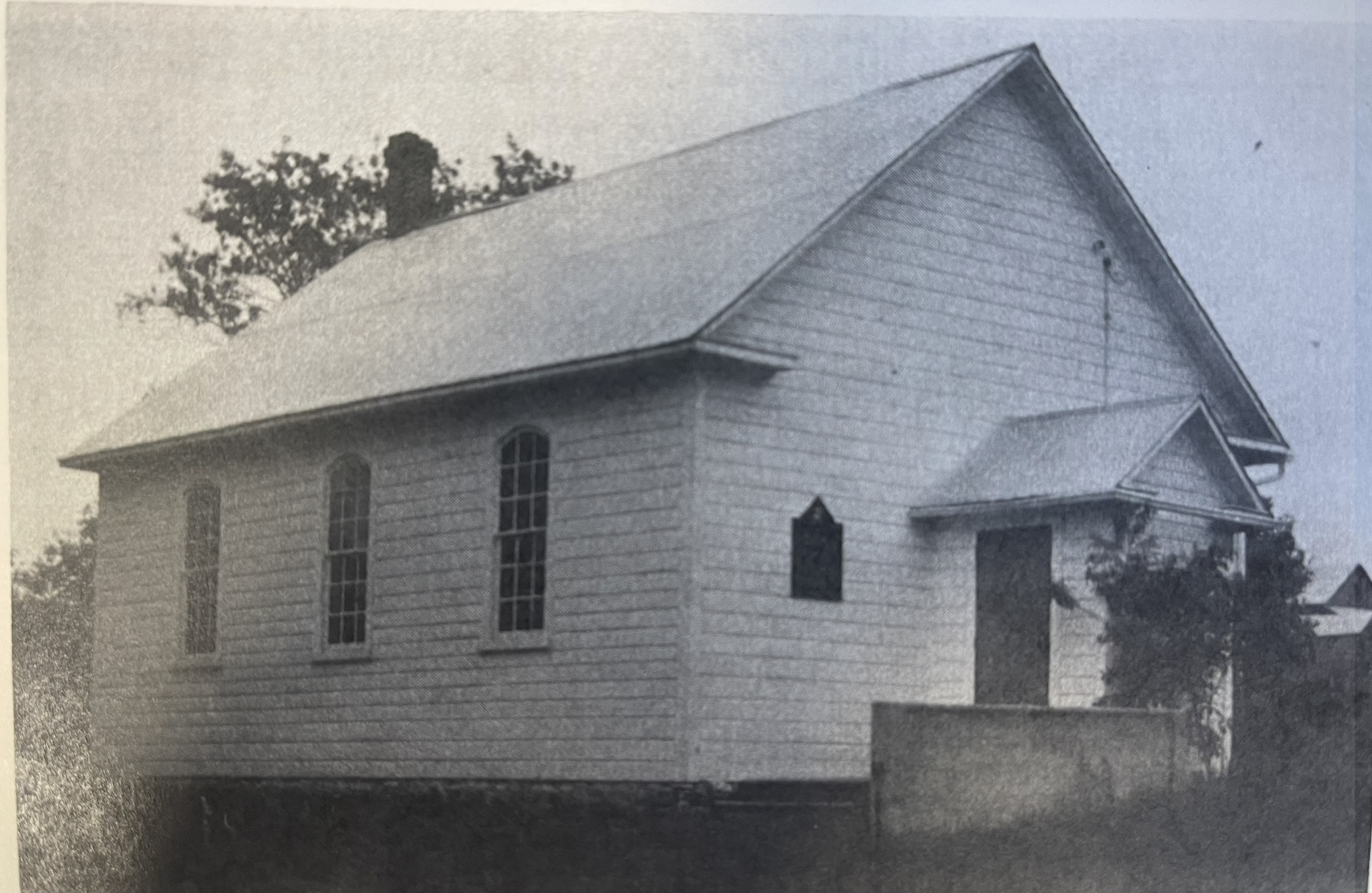
Coulson Church built in 1881. Page 179 Story of Oro.
Craighurst
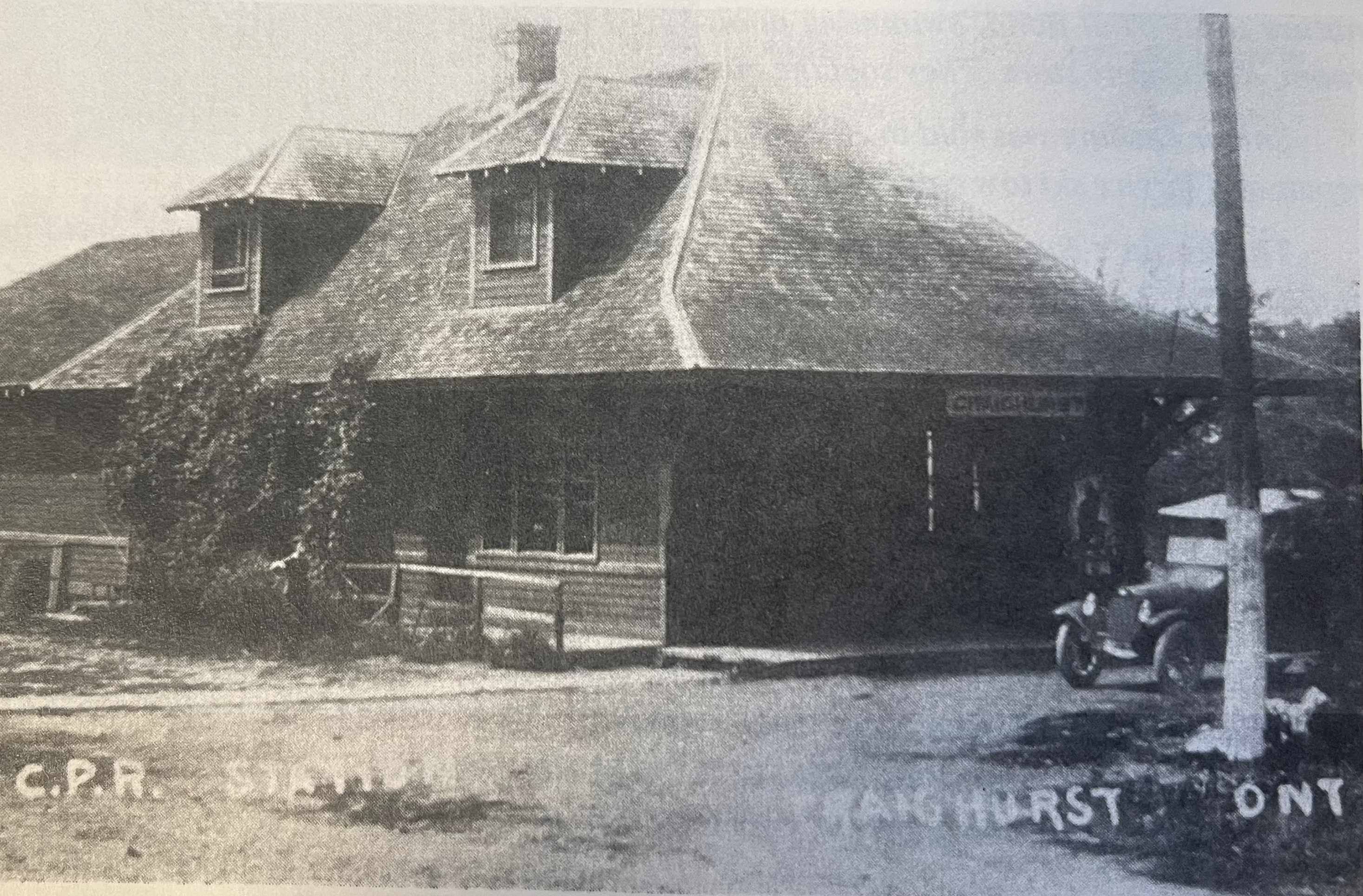
C.P.R Station, Craighurst. Page 187, Story of Oro.
The first post office in this area began in 1840 and the postmaster was John Craig. In 1858 to honour his many services to the area the village’s name was changed from Morrison’s Corners to the present Craighurst. Four hotels operated in this village due to their location on Penetanguishene Rd (the main route to the Naval Base at Penetanguishine). A Canadian Pacific Railway station brought additional prosperity to the area taking out timber, grain, and potatoes.
Creighton
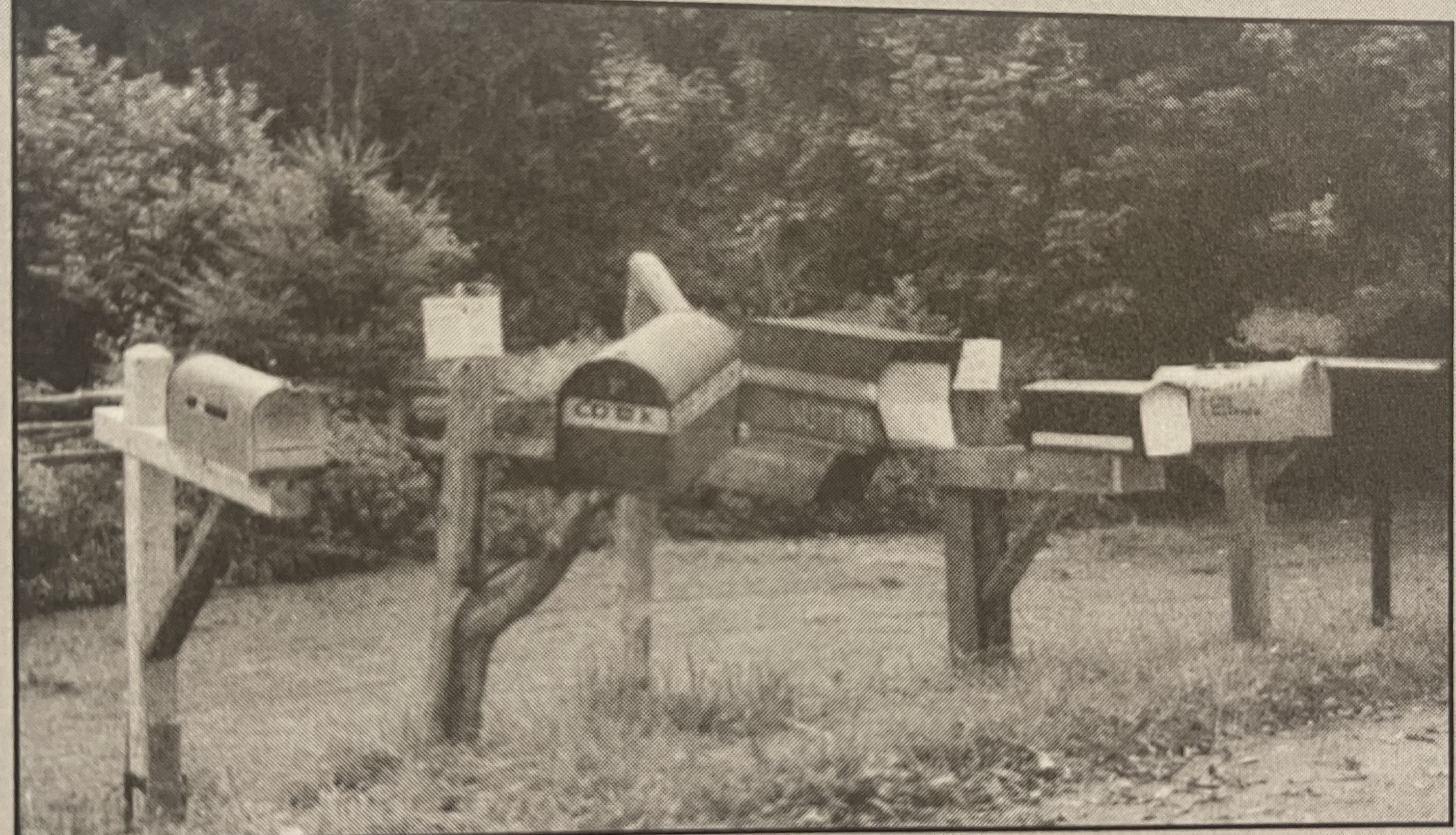
Mailboxes at Creighton c. 2001. Pg 135 Medonte: A Township Remembered
The village of Creighton consisted of three saw and shingle mills, owned by the Cooks, the Connors and the Chases. It also had two hotels, a schoolhouse, two woolen mills, a blacksmith shop, a boot maker’s shop, a milliner and dress shop, a general store, a post office, a tavern, two halls and various homes and farms.
The name came from a preacher who was in the area at the time and Mrs. Cavanagh wrote to the government asking that her post office be named Creighton.
Today, many of the landmarks are gone but some remain as private homes. The Creighton House, built by Michael Cavanagh in 1850, was the general store, tavern, inn and post office finally closing to become a private residence in the 1950’s.
The Creighton halls were built in 1850 and 1880 and are still standing. The Creighton school was built in 1866 and turned and bricked in 1899. It is now a private home.
Crown Hill
Crown Hill was first settled thanks to the accessibility provided by a 1819 military road connecting Kempenfelt Bay to Penetanguishine. Crown Hill continued to develop as an agricultural community, with many families having deep ties to the community such as the Chappell’s, Hickling’s Larkin’s, Lawrence’s, Luck’s, and Drury’s to name a few. Industrious residents ran everything from taverns, grist mills, a cheese factory, blacksmiths, and wheelwrights. As the area was settled and leisure time became more available, locals participated in the Oro Soccer League and Oro Hockey League cup. A male quartet known as the Crown Hill Croakers was in much demand.
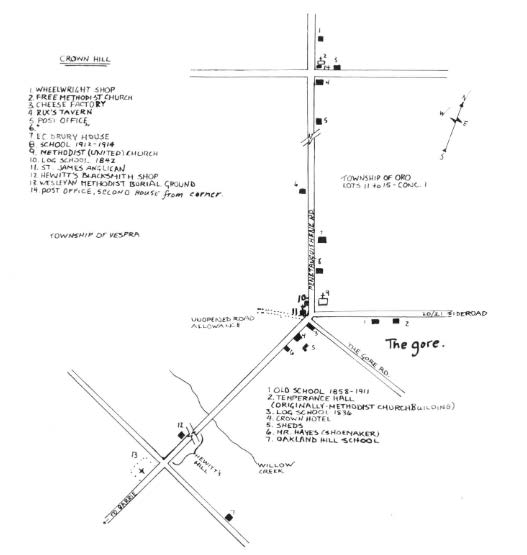
Map of Crown Hill - Page 197, Story of Oro.
Dalston
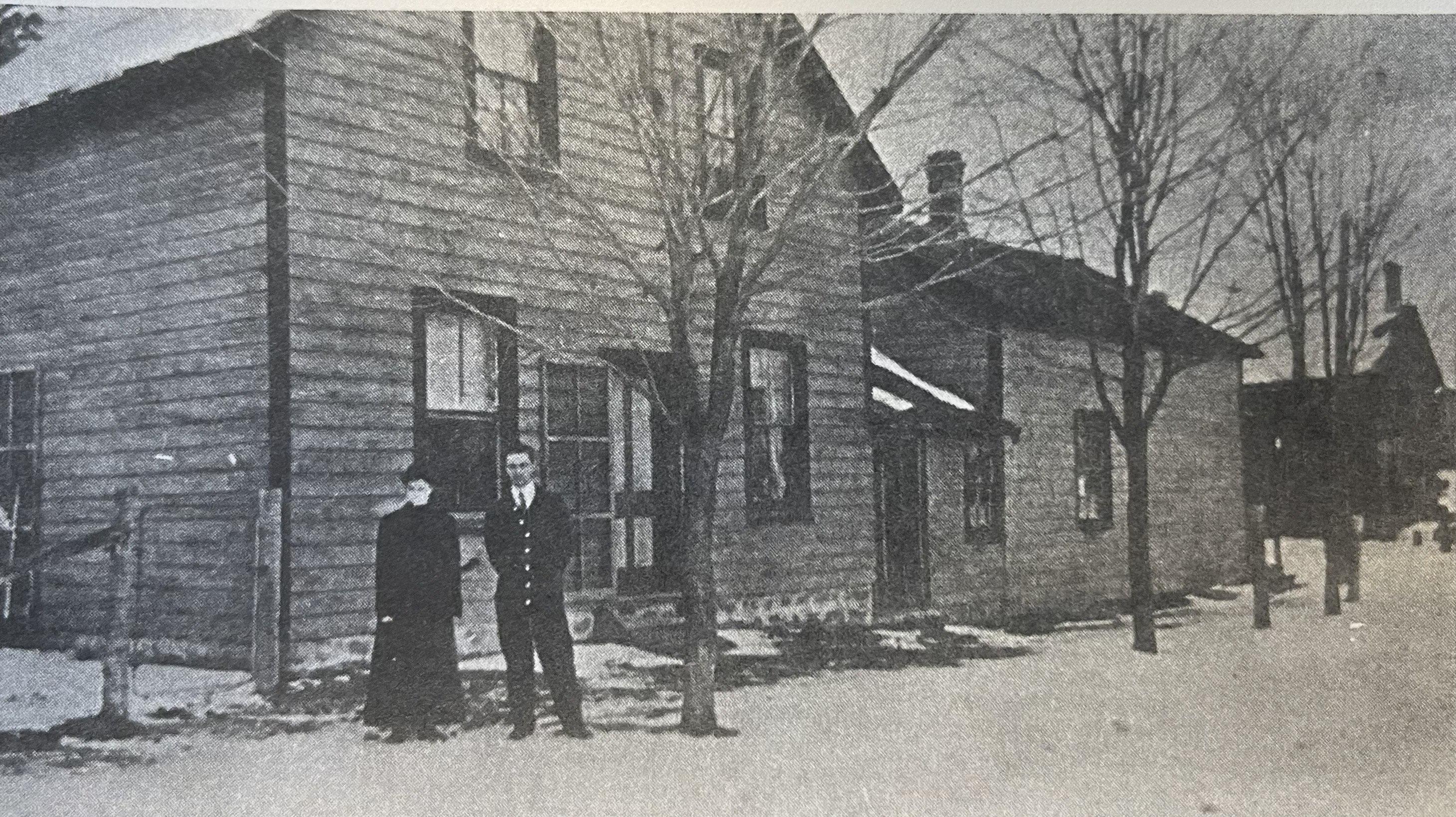
Dalston Store with White’s Tavern in background. Page 213, Story of Oro.
Originally known as White’s Corners, Dalston lies between Crown Hill and Craighurst, with its centre located at the intersection of present day Old Barrie Road/Forbes Road and Penetanguishene Road. The first inhabitants were the Huron who lived, hunted and gardened here until driven out by the Iroquois.
Of the earliest European settlers was Peter White a Wesleyan Methodist lay Minister, and his brother James White. The first [formal] church in the area appears to be a Wesleyan Church in 1855. Peter White passed in 1876 and is buried in the churches cemetery. James White operated an inn, White’s Tavern, on the southwest corner of his property, Lot 26 of Oro. Although it’s unclear when he started his business, it is known that it was the site of the Oro World’s Fair in 1854, 1855, 1856 and 1857.
In 1857 Mr. Henry Clifford purchased property in Dalston for 75 pounds and opened a store across the road from White’s Tavern. Clifford was also the first postmaster, and took on many other roles for the community (i.e. shoemaker, photographer, etc.). Henry renamed the area Dalston, after his former home in England. This area was conducive to agriculture and many settlers became prosperous farmers, as did their descendants. The farmers organized a Grange to order seeds in bulk and also a Beef Ring to collectively butcher.
East Oro (Simpson's Corners)
East Oro, previously known as Simpson’s Corners after Robert Simpson who ran a store and post-office in the community.
East Oro featured a drill hall which was built in 1866-67 by the government to train the volunteers of Oro in response to Fenian raids. Some 65 men were trained at the hall. Later this building was converted to a skating rink, where East Oro’s hockey team played. The hall was later dismantled in 1914 and the lumber reused to construct a barn. An outdoor rink was later built in 1918 for the community to enjoy for many years.
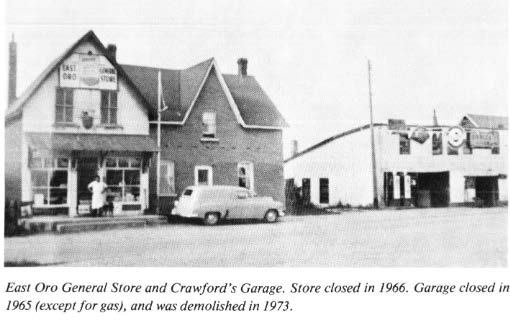
Page 219, Story of Oro.
Edgar
Edgar, one of the most thriving communities in the early days of Oro Township, was established in 1832. At one time it was known as “Richardson’s Corners” but was later name Edgar after an early settler, John Edgar.
This hamlet featured a Half Way House knowing as the Morningstar Hotel. In 1866 John Smith operated a store and post office. The stage brough the mail to the village once each week in the early days. In 1873, the telegraph was installed at the Miller Store. On the south-west corner of the village a shoe repair shop was in operation. There were several resident doctors in Edgar.
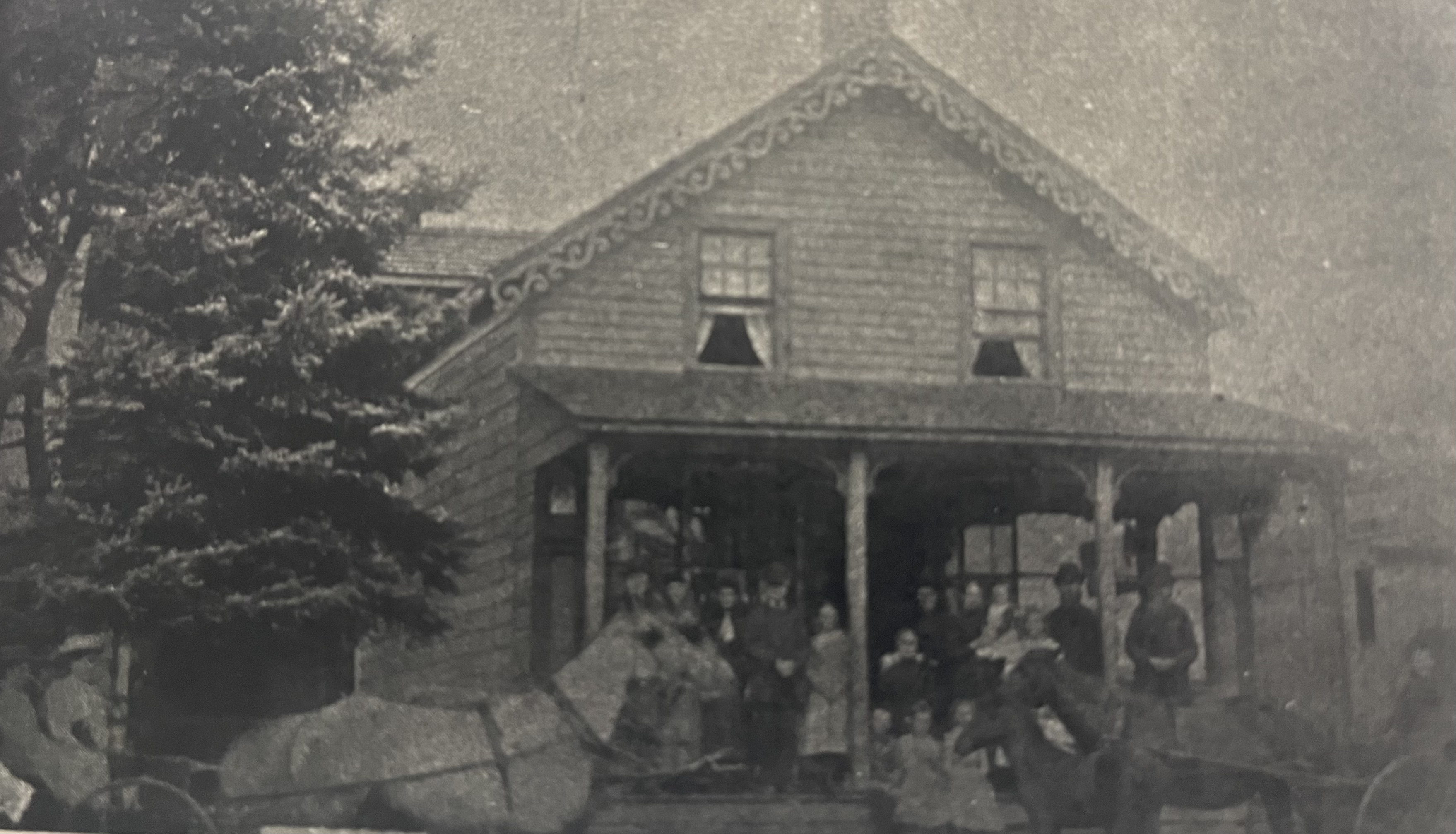
Sandy Miller’s Store in Edgar built in 1871. Pg. 227 “The Story of Oro”
Guthrie
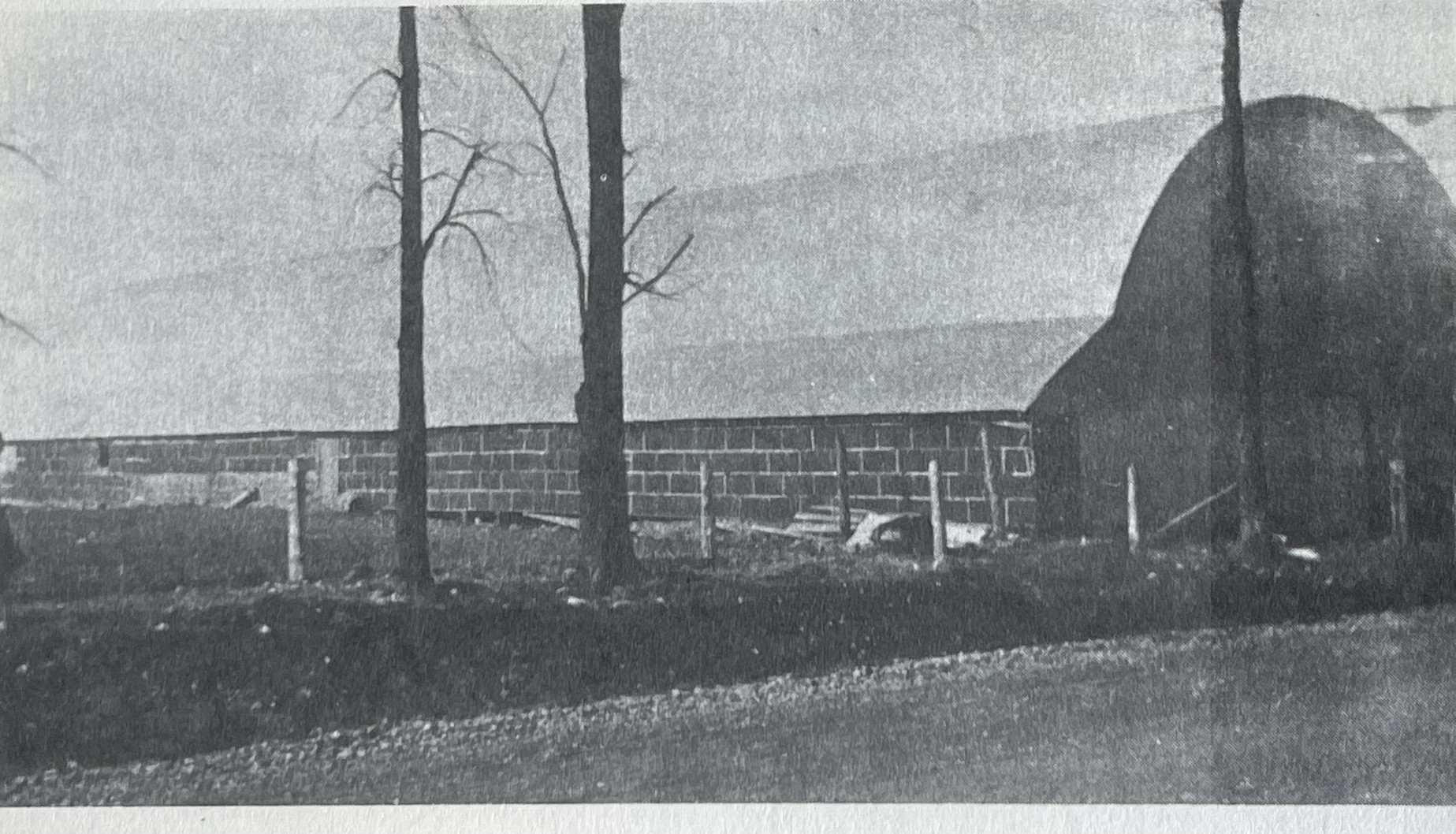
Guthrie Arena, built 1922, destroyed by cyclone on August 13th, 1934 Page 244, Story of Oro.
With its name originally stemming from the great Scottish minister Dr. Thomas Gutherie, Gutherie is a small hamlet, located in the area of present day Highway 11 and Line 6, with its history largely centred around the arena. In 1922 a committee was formed to look into building a covered arena. The area was opened in January of 1923 and the ice surface was lit by gas lanterns. In 1934 the arena was destroyed by a cyclone, but by 1937 a new larger surface was built featuring hydro power! Local saw mills and farms also played a role in the growth of the area.
Hawkestone
Hawkestone is located on the eleventh line, with Lake Simcoe at its southern boundary. The first settlers began to arrive by small sailing ships or steamers in the 1830s at a landing, near the mouth of the Hawkestone Creek. Originally the Hawkestone area was known as Hodges Landing, after Rodgers Hodge, an early settler who built the first wharf off of his property on Lake Simcoe. Various government docks and wharfs have been undertaken since, due to damage caused by ice and waves. During World War II, in 1941, a tank range was established near Hawkestone for training. In more peaceful times two summer camps operated within its limits: the Toronto Girl Guide Association bought the Hodge property in 1940 and across the road the Ukrainian National Federation ran a camp for Ukrainian children.
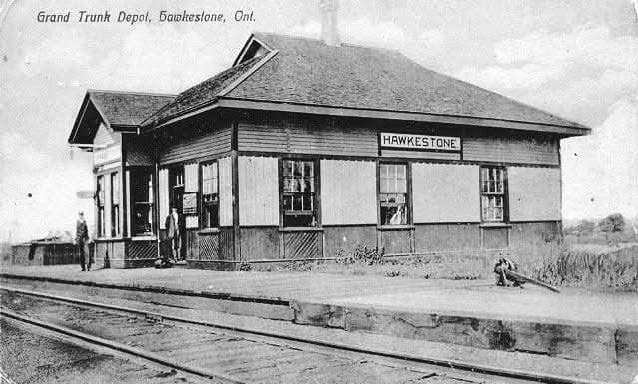
Grand Trunk Depot, Hawkestone, Ontario
Jarratt
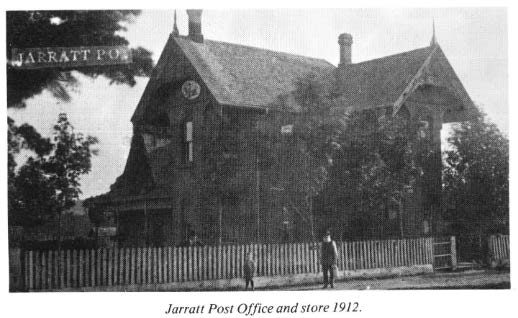
Page 281, Story of Oro.
Jarratt received its name from Charles Jarratt who settled here in 1831 from Kent, England. Like most small towns Jarratt had a blacksmith, church, hotels, taverns, and other small shops. A man named Heard ran a small furniture business using mostly local butternut wood. The Jarratt Creighton Women’s Institute was organized in 1914 and throughout the years has worked for the betterment of the community.
Leigh's Corners
Leigh’s Corners is located just east of East Oro’s centre, at Line 12 and Sideroad 15/16, and gained its name from the Leigh family whom settled in the area. The intersection featured the Leigh’s Corners Wesleyan Methodist Church, with SS.10 Leigh’s Corners school sitting opposite, on land provided by John Leigh at Lot 16, Concession 12.
Like many other agricultural areas of the Township, in 1910, residents of Leigh’s Corners started a beef ring, with a slaughter house on the farm of Albert Leigh. The butchering continued here until 1965.
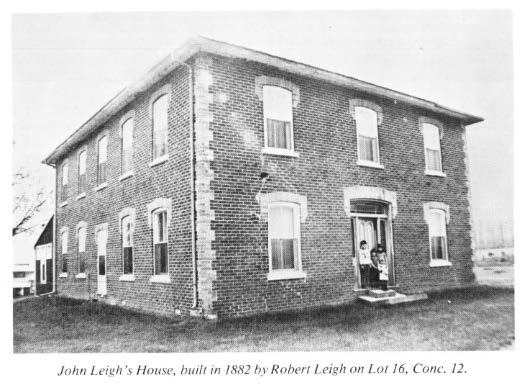
Page 224, Story of Oro.
Mitchell Square
Mitchell Square was established with a log store owned by Mr. Mitchell that was successful, and expanded to a large store of over 50 square feet and three stories high. Likely one of the largest buildings in Oro at the time. This large building housed not only a store but also the post office, Oro telephone exchange, and tax office. The name Mitchell Square was given to the community in 1875 when the post office came to town. Given there was already a Mitchell, Ontario, Mr. Mitchell added “Square” to the name after the tall square shape of the general store. In 1954 this local landmark was burned in a fire.
The area was also home to other industries such as a saw mill, grist mill and blacksmith shop.
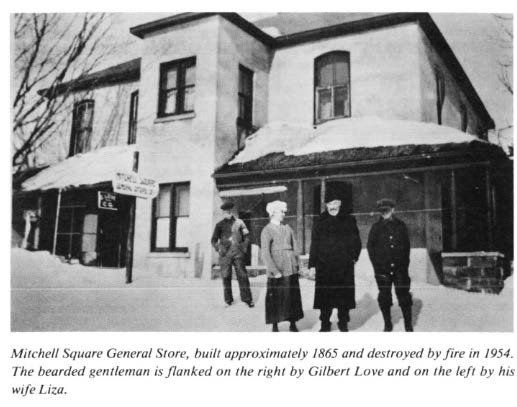
Page 284, Story of Oro.
Moonstone
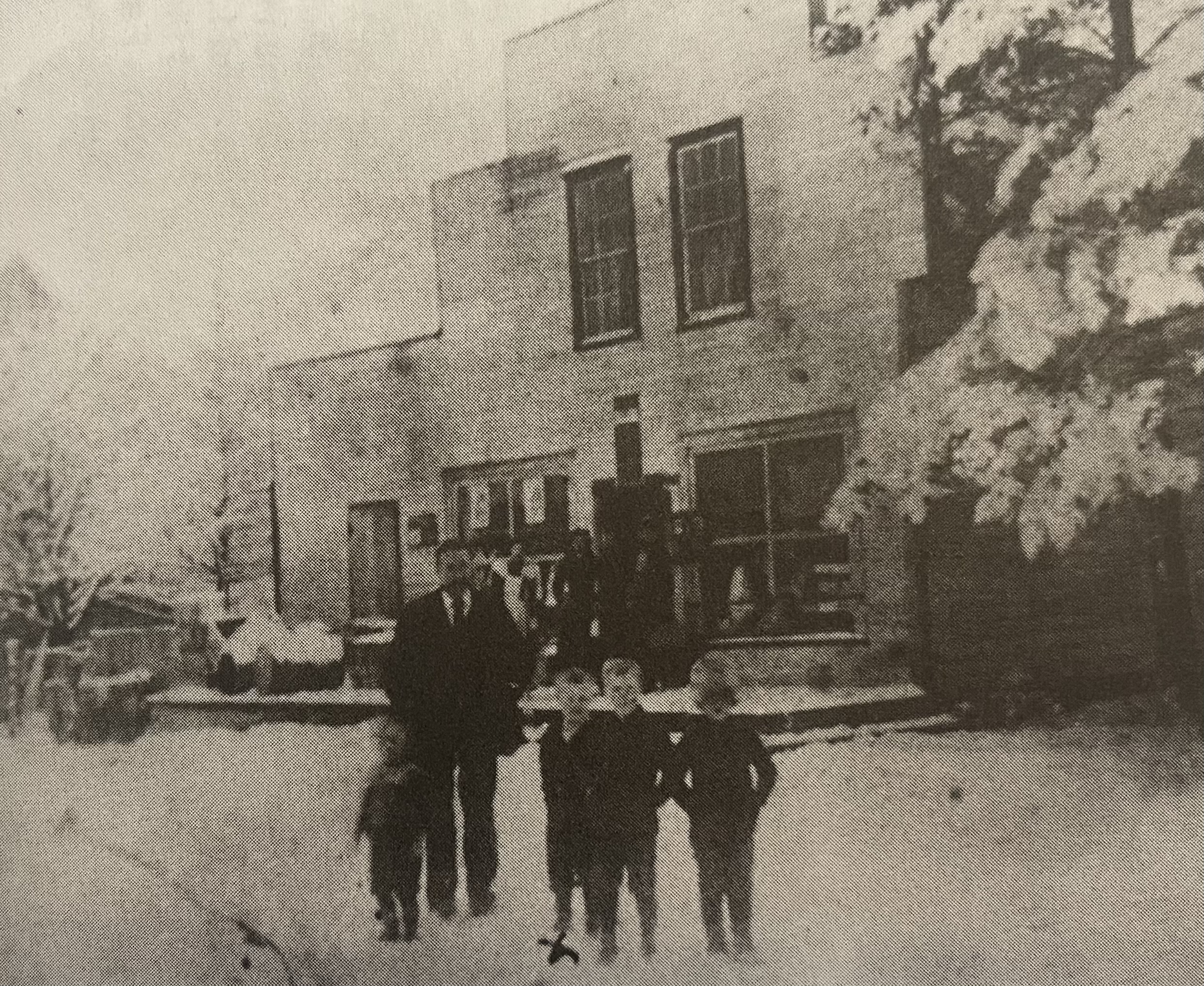
The Moonstone Store c. 1903. Pg. 173 Medonte: A Township Remembered
Moonstone is a community located on County Road 19 between the 7th and 9th Concession. For the first part of its history, this hamlet was known as Medonte. It is said that Mrs. Edmond Moon was reading Wilkie Collin’s book “The Moonstone” and suggested this as a new name for the post office. The fact that the Moon brothers were some of the first settlers in the district may also have had something to do with it!
William Miller had the first general store in Moonstone. After some years, he and his family moved to Brampton in Peel County. Other owners were Sykes, T. D. Robinson and Arthur Dunlop. Lloyd Dunlop, son of Arthur, became the next owner. After a fire in 1954 obliterated the old store, Lloyd rebuilt and expanded the business and sold fine furniture and electrical appliances. The Dunlops of Moonstone became a very well-known business throughout southern Ontario. The business continued until Lloyd retired about 1990 and the store was closed.
The Robinson family served as the secretary treasurer for Medonte. T. D. Robinson filled this position for many years.
George Shannon operated a blacksmith shop in Moonstone for many years. He shoed horses did welding and mended harnesses when horsepower was the means of transportation and farm work.
Nevis
By 1844 the road between Barrie and Orillia was opened and used as a stage coach route. Due to this a tavern and an inn was set up, in the area now known today as Nevis and was then known as Galbraith Corners after the inn’s owner Mr. Galbraith. In 1843 a log school house opened and the Knox Presbyterian Church followed in 1845. This church particularly served the Scottish community including Gaelic speakers. School Section No. 16 was later constructed in the early 1880s and remained in operation until 1963.
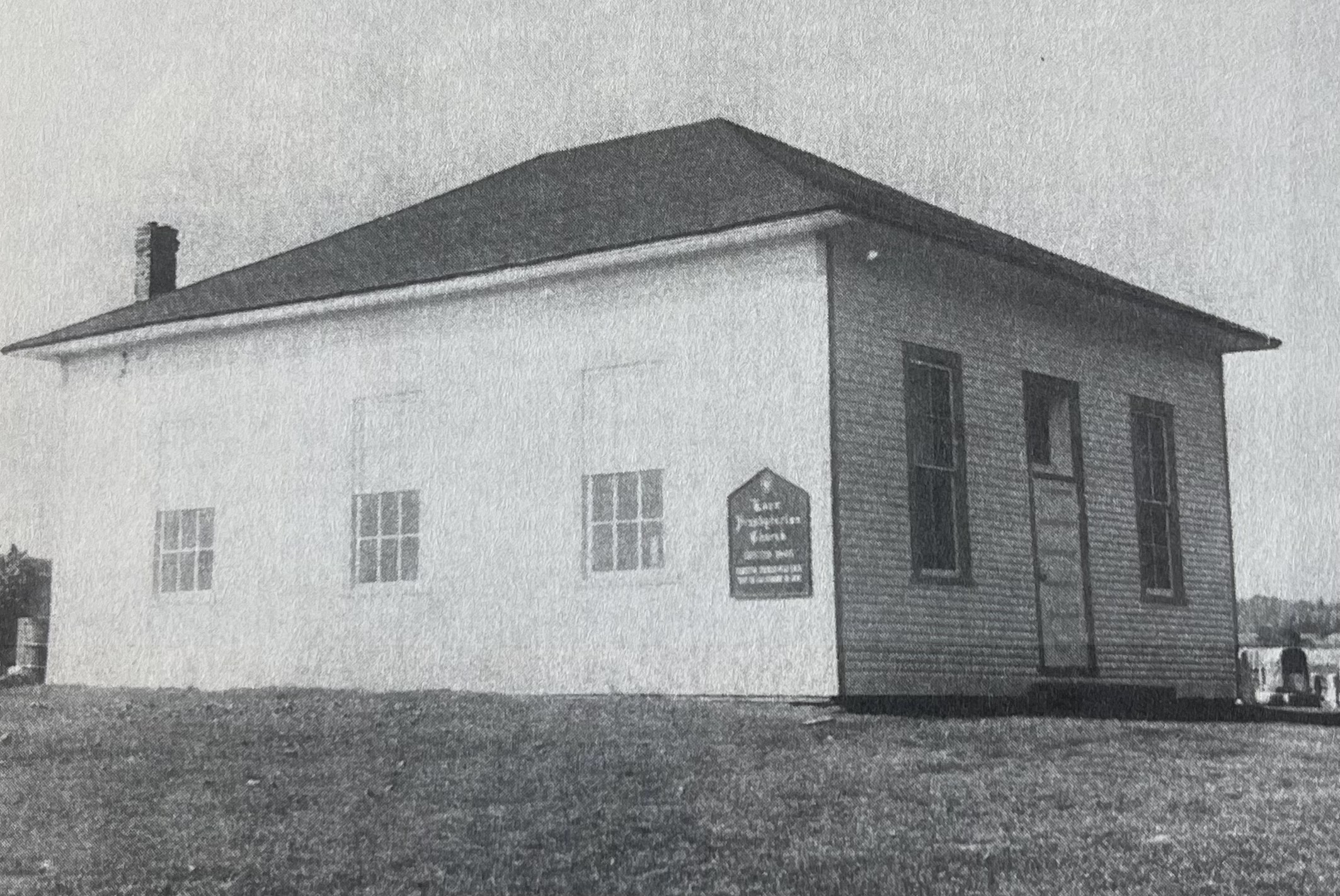
Knox Presbyterian Church. Pg 292, Story of Oro.
Oro-Station
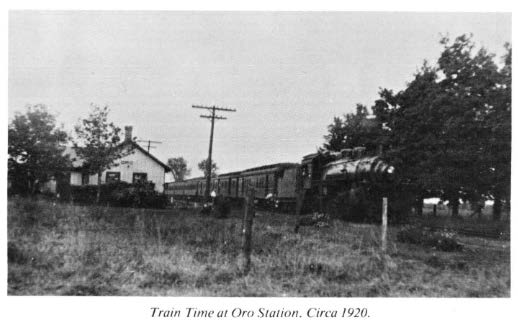
Page 298, Story of Oro.
Early settlers arrived to this area via boat to Hodges Landing, Ridge Road was in use by 1833 but only from Barrie to Shanty Bay, it was not opened eastward to Oro Station until after 1848. Oro Station received its name after the railway went through in 1870, when a station was built on the seventh line. Previous to this, it was known as Reevie’s Corners due to a weaver named Reevie who lived there. Students in Oro Station took the train into Barrie to study at Barrie Collegiate and Barrie Business College. Ice was also an important commodity. The storekeepers sold this ice in the summer, especially to the summer residents who began to holiday along the lake in the early nineteen hundreds.
In 1966, the station was removed. Modern steam trains still passed through but did not stop in Oro Station.
Price's Corners
This community was named for the Price family, who emigrated from Ireland in 1832. Price’s Corners is at the crossroads of what in earlier days was four townships - Oro, Medonte, North and South Orillia. The earliest inn at the Corners was kept by Henry Fraser started in 1833. Early travellers wrote of what torture it was to travel on the Coldwater road, then a trail through thick woods, but they praised the inn. The church at Price’s Corners is St. Luke’s Anglican and was build on land given by the Price family.
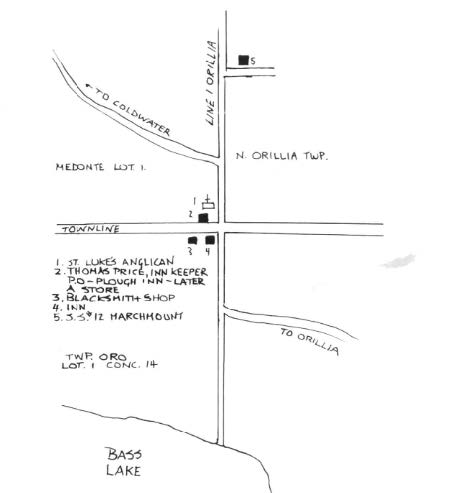
Early Map of Price’s Corners from the Story of Oro, Page 314, Story of Oro.
Rugby
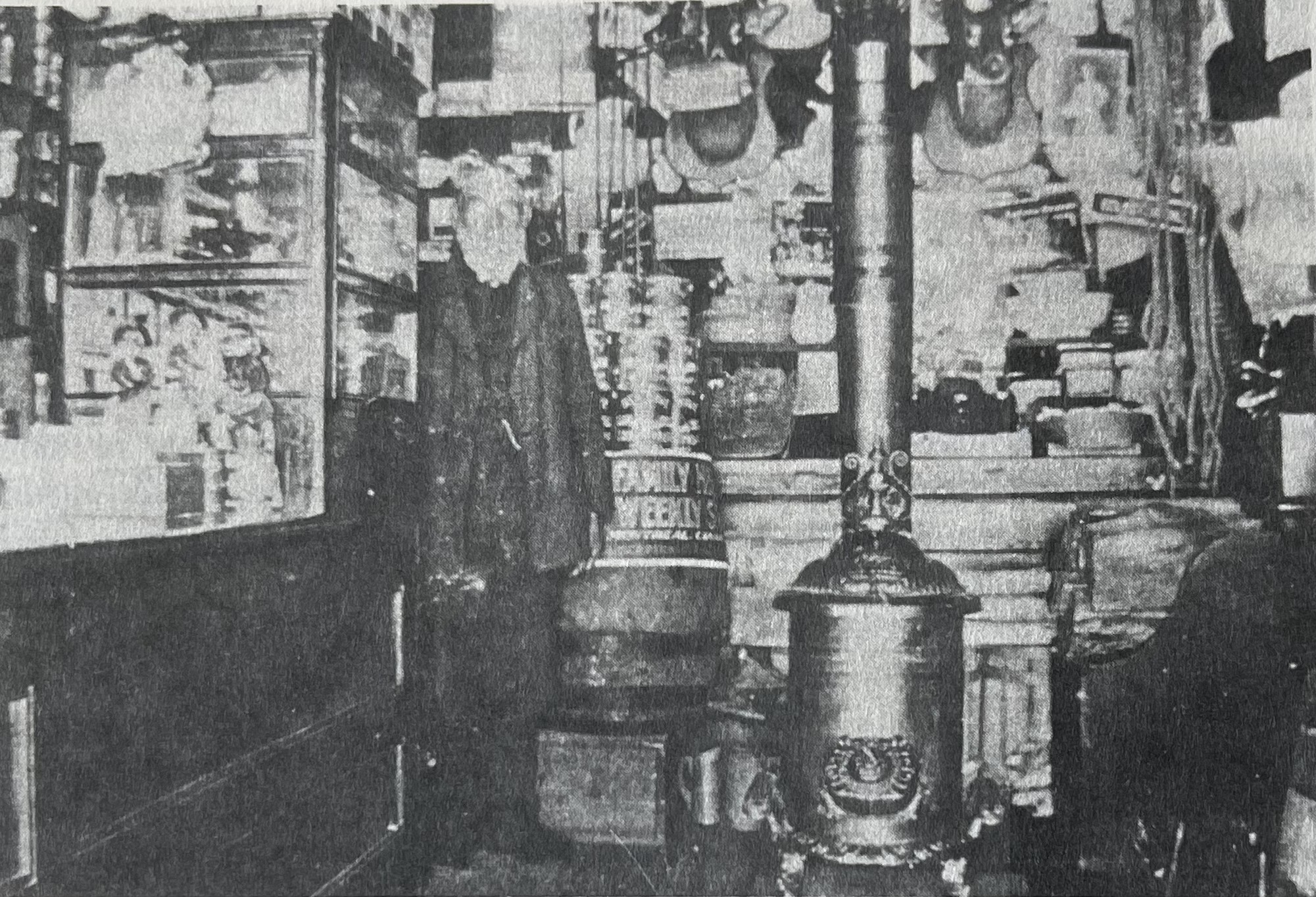
Interior of James Ball’s Store 1860-1938. Pg 318 Story of Oro
Rugby was named by an early settler whom had come from Rugby, an English city in Warwickshire. The community is situated on Old Barrie Road, formerly known as the Upper Crossroad, a stage route from Barrie to Orillia. Rugby featured stores and a post office for many years. James Ball came to Rugby from Wyebridge in the mid 1860’s and opened a shop where he made and repaired wagons, sleighs, single and double buggies. A new wagon in the 1870’s cost $80.00. One unique industry of the area was the lime and brick kilns which were an important part of constructing brick buildings. Rugby Community Fire Brigade was organized in 1955.
Mrs. Esther MacGregor (Miller) was born in Rugby in 1871 and is most commonly known as her pen name Marion Keith. She wrote numerous books, with her first novel published in 1905, “Duncan Polite.” In her 80s she wrote “The Grand Lady”, a pioneer story about life in Oro.
Shanty Bay
Shanty Bay at its center is located at Line 2 and Ridge Road, and extends to the lakeshore. The community has a history that begins about 1830. Shanty Bay was established when Lt. Col. Edward O’Brien was granted 400 acres of land by the government. As settlers came in, they hastily built shanties near the water as temporary shelters giving this community its name. St. Thomas’ Church took six years to build and was constructed of mud bricks which when completed were plastered over.
Early docks includes those on Walter Raikes property near the first concession and a wooden dock at Rosie Point. Approximately 1908 a government dock was constructed for the village, with lake steamers called to pick up and discharge passengers.
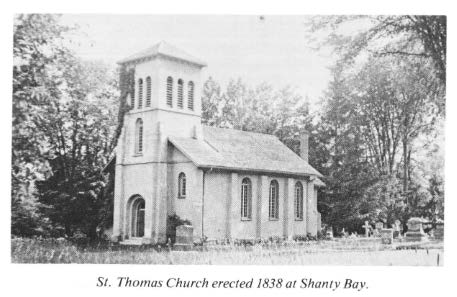
Page 330, Story of Oro.
Contact Us
Township of Oro-Medonte Administration Centre
148 Line 7 South
Oro-Medonte, ON L0L 2E0
Phone: (705) 487-2171
Fax: (705) 487-0133
Sign up for our Council Highlights & Township Updates Newsletter
Stay up-to-date with Council meetings, important topics of discussion, and relevant information by subscribing to the Council Highlights & Township Updates eNewsletter!
